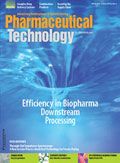Global Instability Affects the Pharma Market in Brazil
How badly is Brazil's pharmaceutical market suffering from the global instability of emerging markets?

Brazil is the world’s seventh richest country by gross domestic product (GDP) with $2.422 trillion, according to International Monetary Fund statistics from October 2013. In that same year, the country’s GDP rate was the world’s third best at 2.3%, only lower than China and South Korea among 13 economies analyzed by Brazil’s Geography and Statistics Institute (IBGE).
The Brazilian economy, however, slowed significantly between 2011 and 2012, according to World Bank figures. GDP growth of 7.5% decelerated to 2.7% in 2011, dropped to 0.9% in 2012, and grew back to 2.3% last year. Growth was smaller than 1% in 2012. As figures plunged, the Brazilian pharmaceutical industry feared that the economic instability seen in emerging markets could affect the sector as well; it was clear that industrial output and investments were being impacted nationwide.
Pharma Market Growth
As the country prepares to host the World Soccer Cup in 2014 and the Olympic Games in 2016, investments in general infrastructure are needed. General positivity, however, began slipping as numbers dropped amid loud criticism regarding such events.
When GDP and pharmaceutical industry figures came out, however, the pharmaceutical sector could breathe after all. Revenues for 2013 were reported to be in line with market expectations. Local pharma revenues grew 17% last year, reaching (Brazilian Real) R58 billion (US$136 billion). The country’s pharmaceutical market had continued its double-digit growth pattern in 2013, according to IMS Health data.
In 2013, according to IMS Health, 2.9 billion units of pharmaceutical drugs were sold. The figures showed a 11.6% growth in terms of units sold compared with 2012 results. Not that bad considering the effects of global instability on other sectors of the economy.
According to The National Pharmaceutical Laboratory Association (Alanac), the sector’s growth reported for 2013 was said to be positive, considering that products underwent strong sales and cost pressures in the period.
According to the World Bank, while the slowdown was driven by domestic and external factors, signs already suggested that growth patterns could finally reoccur. The Bank says the country has been less vulnerable to external drops due to Brazil’s stable economic growth, lower inflation rates, and overall social improvements.
Generic-drug Growth
The generic-drugs market segment reported the highest growth in terms of revenues and units sold, according to IMS Health. In units, the sector grew 16% to 788.6 million units sold, meaning generic drugs took as much as 27% of the industry’s market share in 2013. In terms of revenues, these drugs grew 22% at R13.7 billion (US$32 billion).
IMS Health figures do not consider that the industry offers the retail market a 50% or more discount on generic drugs and its results are based on prices of products registered by laboratories at the pharmaceutical market regulation chamber (CMED). Nevertheless, according to the Brazilian Generic Drugs Industry Association (PróGenéricos), results were in line with the growth expected by the association for 2013, between 15% and 20%.
Future Expectations
For 2014, Brazil’s generic-drugs association expects the sector to maintain the same level of growth compared with previous years, while it bets that the association’s current policy of lower prices (compared with traditional brand drugs) and best quality will continue attracting consumers all over the country. Undoubtedly, uncertainty is still present and has been a reason for worry. While the Brazilian government expects GDP growth to be approximately 2.5% in 2014, local consulting firm Focus has projected a lower GDP growth of 1.7% in 2014.
In terms of macro economy, the World Bank considered Brazil a “solid” market, adding that the country’s outlook risks would lie in its limited trade openness and high foreign reserves. While such issues are still unresolved, the World Bank states that its mission for Brazil, through the support of the local government and the private sector, includes improving services to the poor, strengthening public and private investment, as well as regional and territorial development. One of the active projects includes The Family Health Program, which aims to increase access to primary care, raise patient satisfaction, and improve efficiency and effectiveness of health-service providers.
It is clear why emerging markets, even with their uncertainties and difficulties, are considered a new hope for the global pharmaceutical industry, as mature markets manage stagnation and seek new partnerships overseas. Brazil is one of these markets, but drug makers need to acknowledge the steep changes to be faced as the industry in this diverse country becomes increasingly competitive and, therefore, should also consider locally focused strategies to help avoid unexpected risks along this
bumpy road.
About the Author
Hellen Berger is a business news correspondent based in São Paulo, Brazil.
